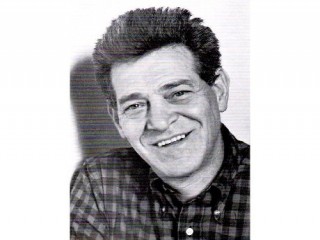
William Steig biography
Date of birth : 1907-11-14
Date of death : 2003-10-03
Birthplace : Brooklyn, New York City, United States
Nationality : American
Category : Famous Figures
Last modified : 2011-09-27
Credited as : cartoonist Shrek, sculptor, children's literature
3 votes so far
Born in Brooklyn, New York, Steig was the son of Polish-Jewish immigrants Joseph and Laura Ebel Steig. The future illustrator first took up drawing as a teenager, working as a cartoonist for his high school newspaper. Steig's parents were laborers-his father painted houses and his mother worked as a seamstress. As such, they did not want Steig or his three brothers to become laborers for fear they would be exploited by businessmen. They were not to become businessmen, either, for fear they would exploit laborers. Instead, the brothers were encouraged to become artists. For two years, Steig attended the City College of New York, where he earned All-American honors in water polo. From there, he attended the National Academy of Design in New York for three years and spent a week at the Yale School of Fine Arts.
Steig turned to drawing after the Depression set in around 1929 and the family needed money. He had intended to go to sea and become a beachcomber, but he felt a duty to take care of his parents and younger brother. In 1930, he sold his first cartoon to the New Yorker for $40 and was subsequently hired as a staff cartoonist. That first cartoon depicted one prison inmate lamenting to another, "My son's incorrigible, I can't do a thing with him." Over the next 70 years, Steig produced 1,600 drawings and 117 covers for the magazine. He first gained notoriety for his series of "Small Fry" cartoons that depicted hard-nosed brats. They arrived in 1931 and stayed for 30 years, appearing both inside and on the cover.
In his 60s, Steig began writing children's books and published more than 25. His first book used letters to stand for words. Published in 1968, it was titled "CDB!" which meant "See the bee." Most often, however, his books featured animal heroes like brave pigs, dogs, donkeys or other strange creatures. Steig focused on animal characters because he felt it gave him more freedom to do wackier things. He also thought children were amused by watching animals behave like the humans they knew.
His third book, 1969's Sylvester and the Magic Pebble, won the Caldecott Medal in 1970, the highest honor a children's picture book can capture. It tells the story of a donkey who turns into a stone. Another favorite was The Amazing Bone, published in 1976, which is about a day-dreaming pig on the way home from school. Another beloved book was 1982's Doctor De Soto, which featured the dilemmas of a mouse dentist treating a hungry fox. Deemed semi-autobiographical, Steig's last book, When Everybody Wore a Hat, came out a few months before his death.
For Steig, writing children's books was "as easy as pie," he once told the Boston Globe. "A small book, if you're functioning well, you can write pretty quickly, a few days or a few weeks. The illustrating is more time-consuming: I hate to illustrate my books, because I find it hard to repeat scenes and characters. It looks bad to me."
Steig's children's books were also wildly popular because of the crazy, complicated language he used-words like lunatic, palsied, sequestration, and cleave. Kids love the sound of those words even if they do not quite understand the meaning. Steig's descriptions were also clever. He once described a beached whale as "breaded with sand."
Throughout the course of his career, Steig compiled his cartoons and drawings into books. Some of them were published first in the New Yorker. Others were deemed too dark to be printed there. Most of these collections centered on the cold, dark psychoanalytical truth about relationships. They featured husbands and wives fighting and parents snapping at their kids. His first adult book, Man About Town, was published in 1932, followed by About People, published in 1939, which focused on social outsiders. Sick of Each Other, published in 2000, included a drawing depicting a wife holding her husband at gunpoint, saying, "Say you adore me."
According to the Los Angeles Times, fellow New Yorker artist Edward Sorel once wrote a review of Steig in which he said: "If we consider his entire oeuvre: his prolific output; the inventiveness of his stories, so often involving transformation; his precise and demanding language; and the sheer beauty of his pictures, then his legacy can only be described as unprecedented."
Steig also liked to take credit for changing the focus of the contemporary greeting card industry. According to the Washington Post, Steig said, "Greeting cards used to be all sweetness and love. I started doing the complete reverse-almost a hate card-and it caught on."
Over the course of his life, Steig married four times. His first wife was Elizabeth Mead, sister of anthropologist Margaret Mead. They married in 1936, had a son and a daughter, and divorced. In 1950, he married Kari Homestead and they had one daughter before their 1963 divorce. In 1964, he married Stephanie Healey and they divorced in 1966. His fourth wife was Jeanne Doron, whom he married in 1969. They had one son and two daughters and remained together until his death.
Steig continued to work well into his last year. At age 95, he died on October 3, 2003, at his home in Boston, Massachusetts. He is survived by his wife, Jeanne; two children from his first marriage, Lucy and Jeremy; a daughter from his second marriage, Maggie; and two grandchildren.
















